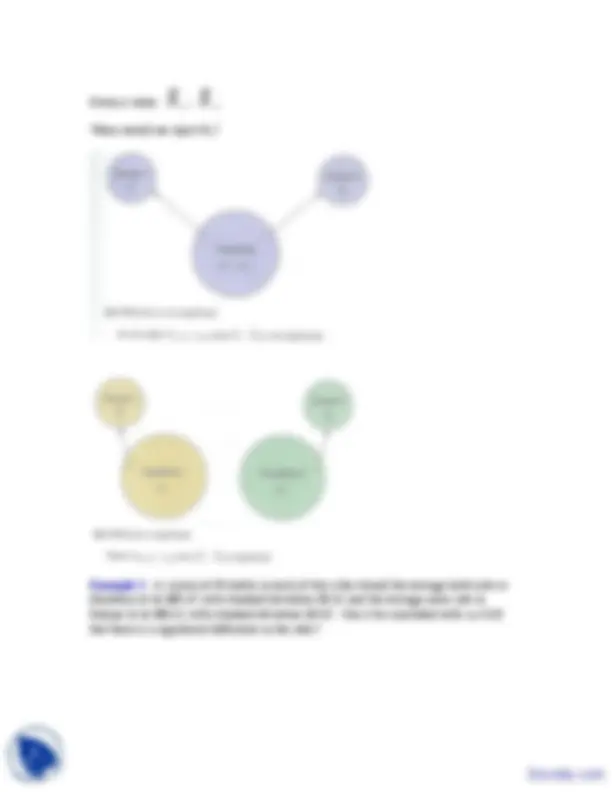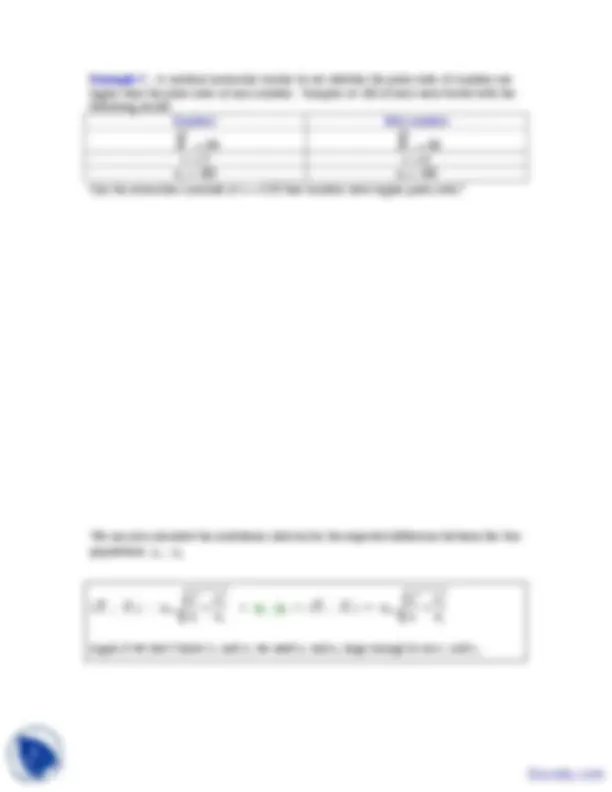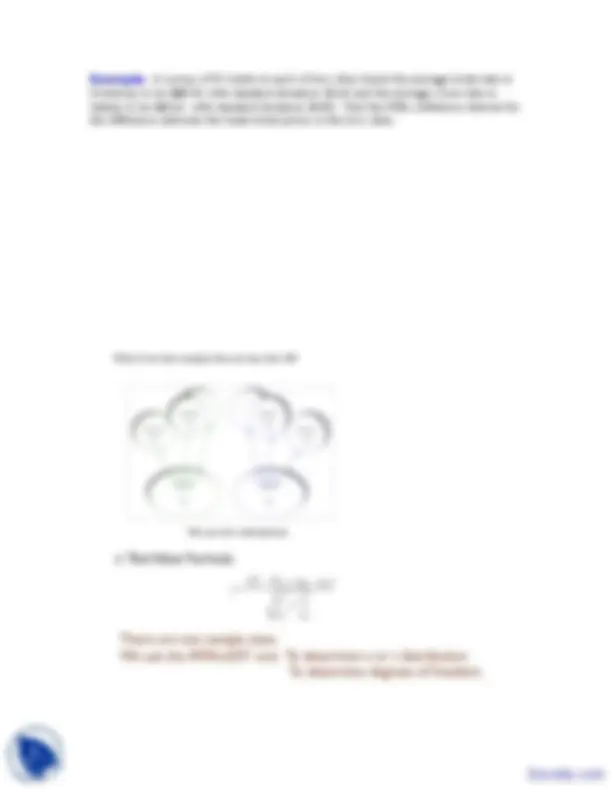






Study with the several resources on Docsity

Earn points by helping other students or get them with a premium plan


Prepare for your exams
Study with the several resources on Docsity

Earn points to download
Earn points by helping other students or get them with a premium plan
Community
Ask the community for help and clear up your study doubts
Discover the best universities in your country according to Docsity users
Free resources
Download our free guides on studying techniques, anxiety management strategies, and thesis advice from Docsity tutors
Comparing two means, Samples, Distribution values, Expected value, Same average of populations, Test value, Confidence interval, T test value formula, Z test value formula are learning points available in this lecture notes.
Typology: Study notes
1 / 8

This page cannot be seen from the preview
Don't miss anything!





Comparing Two of Something I. Means Comparing two means: o Tires for tread wear o Cough syrup effectiveness (any two drugs) o Average age of students at different schools Large samples n ≥ 30 or σ known
If the populations have the same average (μ 1 = μ 2 ) then the values will usually be 0. If not our expected value for a given sample is μ 1 - μ 2
large. Sample 1A n ≥ 30 X (^) 1A Sample 2A n ≥ 30 X (^) 2A Population 1 Brand A
Population 2 Brand B
Sample 2A n ≥ 30 X (^) 2B Sample 1B n ≥ 30 X (^) 1B
With n ≥ 30 we get a normal distribution of mean differences. Using our test value format: Test value = (observed value) - (expected value) standard error So we get a new formula for calculating Test values. Test value for comparing two means with large sample sizes or known σ 1 and σ 2.
2
2
Note: This is if we know σ 1 and σ 2. If not we have large samples and we use s 1 and s 2 (Central Limit Theorem) Note in testing means the null hypothesis is always the same: H 0 : μ 1 = μ 2 So for our purposes μ 1 - μ 2 = 0
Example 2 : A medical researcher wishes to see whether the pulse rates of smokers are higher than the pulse rates of non-smokers. Samples of 100 of each were tested with the following results: Smokers Non-smokers
s 1 = 5 s 2 = 6 n 1 = 100 n 2 = 100 Can the researcher conclude at α = 0.05 that smokers have higher pulse rates? We can also calculate the confidence interval for the expected difference between the two populations: μ 1 - μ 2 ( X (^) 1 - X (^) 2 ) - zα/ σ 1 2 n 1
σ (^2) 2 n 2 < μ 1 - μ 2 < ( X (^) 1 - X (^) 2 ) + zα/ σ 1 2 n 1
σ (^2) 2 n 2 Again if we don’t know σ 1 and σ 2 we need n 1 and n 2 large enough to use s 1 and s 2.
Example: A survey of 50 hotels in each of two cities found the average hotel rate in Monterey to be $88.42 with standard deviation $5.62 and the average room rate in Salinas to be $80.61 with standard deviation $4.83. Find the 95% confidence interval for the difference between the mean hotel prices in the two cities.
Example: The average farm size in Monterey County is 156 acres. The average farm size in Humbolt County is 162 acres. Assume the data values were obtained from 2 samples with standard deviations 32 and 11 acres respectively and sample sized of 8 and 10 respectively. Find the 95% Confidence interval for the differences in the acreages and compare it to our previous results for hypothesis testing.
Example: Researchers found that 12 of 34 small nursing homes had a vaccination rate of less than 80%, while 17 out of 24 large nursing homes had a vaccination rate of less than 80%. At a 0.05 level of significance, test the claim that there is no difference in the proportions of the small and large nursing homes with a resident vaccination rate of less than 80%. (You Try)Example: In a sample of 200 workers, 45% said that they missed work because of personal illness. Ten years ago in a sample of 200 workers, 35% said they missed work because of personal illness. With .01 significance, is there a difference in the proportion?